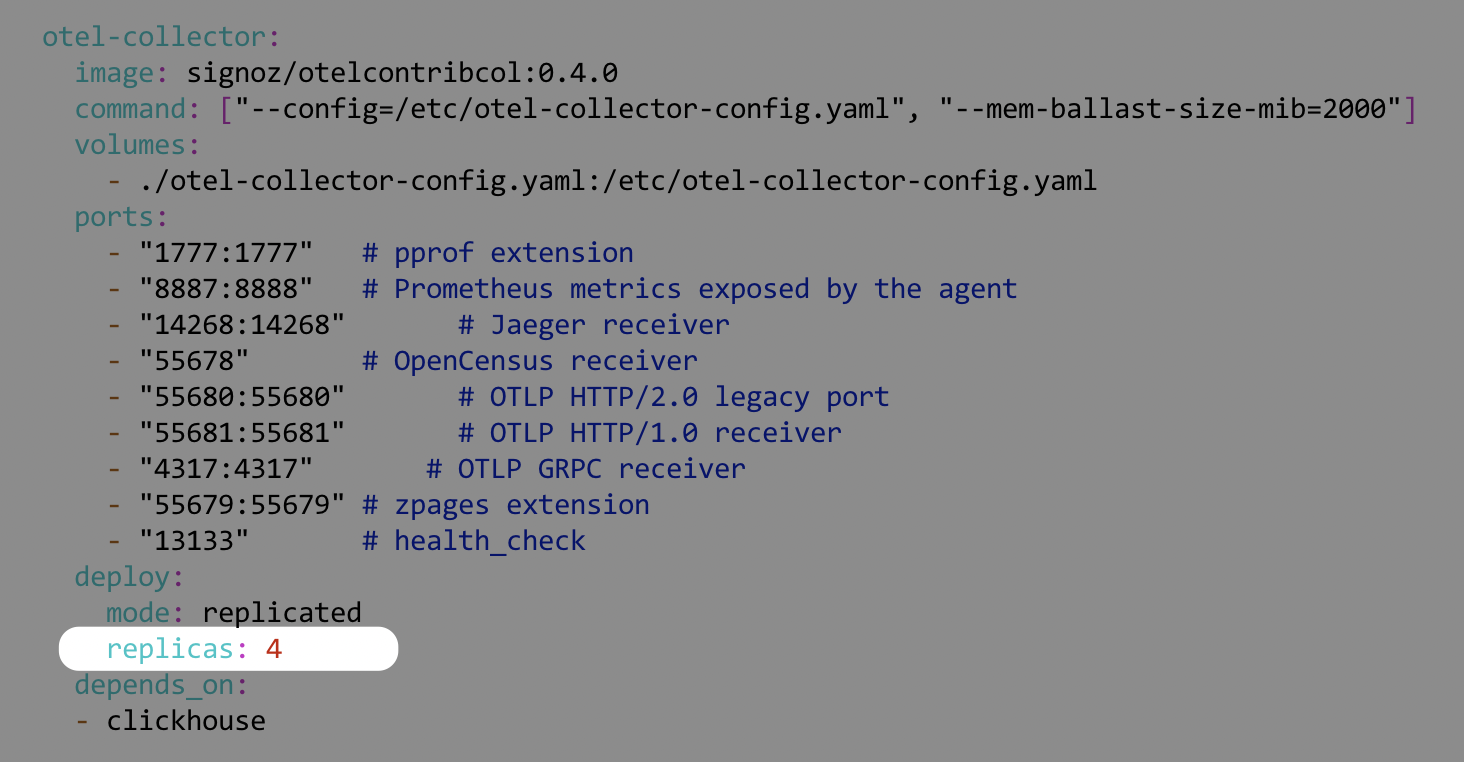Docker Swarm
Once you have successfully installed SigNoz on Docker Swarm, the following sections provide an overview of the activities that are required to successfully operate SigNoz.
Stop/Start
To stop the running SigNoz cluster:
docker stack rm signoz
To start/resume the running SigNoz cluster:
docker stack deploy -c docker-swarm/clickhouse-setup/docker-compose.yaml signoz
*Note: The newly created SigNoz cluster should mount on the existing local path in the node.
Upgrade
To upgrade, you can manually update the image tag for query-service, frontend and otel-collector.
And run the command to start the cluster:
docker stack deploy -c docker-swarm/clickhouse-setup/docker-compose.yaml signoz
*Note:
- Be careful! There might be configuration changes and version mismatch.
- Before upgrading, checkout to the release tag: for example
git checkout v0.6.1and compare the Docker Compose YAML and config files.
Uninstall
To delete/uninstall SigNoz cluster:
docker stack rm signoz
Scale Up
SigNoz uses the OpenTelemetry Collector to ingest data. By default, the instructions in the Install SigNoz on Docker Swarm document create three replicas, and each replica can handle 50K spans per second. To handle an increased load, perform the following steps:
Open the
deploy/docker-swarm/clickhouse-setup/docker-compose.yamlfile in a plain-text editor.In the
services.otel-collector.deploy.replicasfield, enter the number of replicas you wish to create. The following example creates four replicas:
Update the
signozstack by entering the following command:docker stack deploy -c docker-swarm/clickhouse-setup/docker-compose.yaml signoz